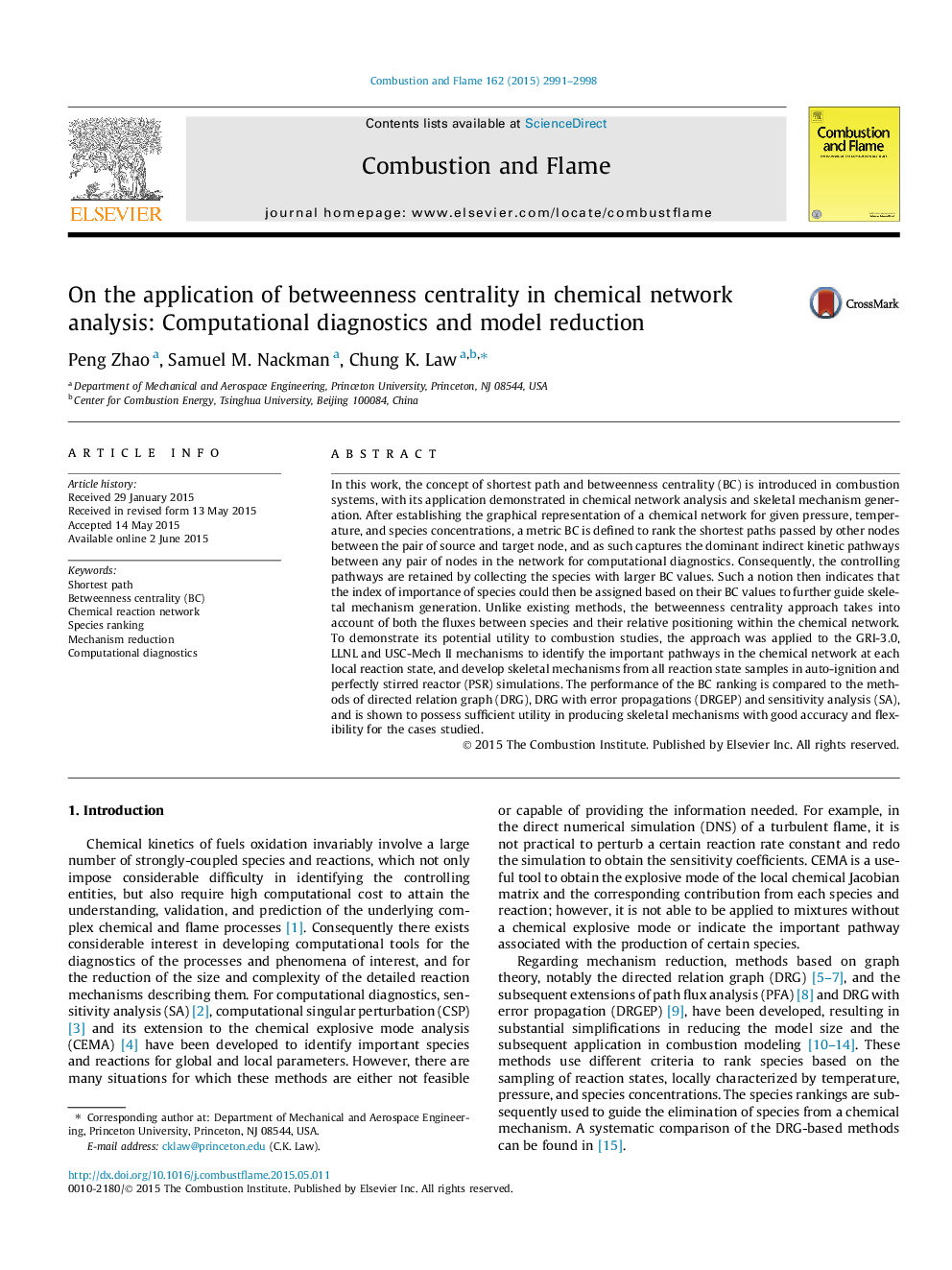| Article ID | Journal | Published Year | Pages | File Type |
|---|---|---|---|---|
| 168506 | Combustion and Flame | 2015 | 8 Pages |
In this work, the concept of shortest path and betweenness centrality (BC) is introduced in combustion systems, with its application demonstrated in chemical network analysis and skeletal mechanism generation. After establishing the graphical representation of a chemical network for given pressure, temperature, and species concentrations, a metric BC is defined to rank the shortest paths passed by other nodes between the pair of source and target node, and as such captures the dominant indirect kinetic pathways between any pair of nodes in the network for computational diagnostics. Consequently, the controlling pathways are retained by collecting the species with larger BC values. Such a notion then indicates that the index of importance of species could then be assigned based on their BC values to further guide skeletal mechanism generation. Unlike existing methods, the betweenness centrality approach takes into account of both the fluxes between species and their relative positioning within the chemical network. To demonstrate its potential utility to combustion studies, the approach was applied to the GRI-3.0, LLNL and USC-Mech II mechanisms to identify the important pathways in the chemical network at each local reaction state, and develop skeletal mechanisms from all reaction state samples in auto-ignition and perfectly stirred reactor (PSR) simulations. The performance of the BC ranking is compared to the methods of directed relation graph (DRG), DRG with error propagations (DRGEP) and sensitivity analysis (SA), and is shown to possess sufficient utility in producing skeletal mechanisms with good accuracy and flexibility for the cases studied.
